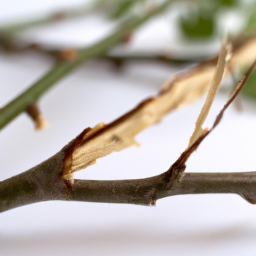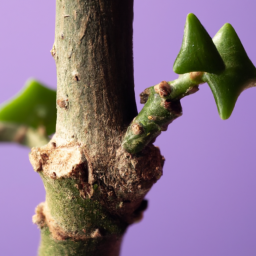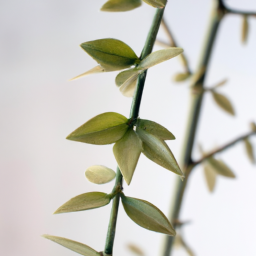
Have you ever wondered how to enhance the growth and shape of your plants? Well, look no further because today we are going to dive into the art of pruning. Pruning is a technique that has been practiced for centuries to promote healthier and more aesthetically pleasing plants. Whether you have a sprawling garden or just a few potted plants, understanding the art of pruning can make a significant difference in the overall appearance and vitality of your greenery. So, grab your shears and let’s explore the world of pruning together.
The Art of Pruning: Enhancing Growth and Shape
The Importance of Pruning in Plant Growth and Shape
Pruning plays a vital role in maintaining the health and aesthetics of plants. It involves the selective removal of specific plant parts, such as branches, buds, or roots, to stimulate growth, improve shape, and enhance overall plant health. Pruning is both an art and a science, requiring careful consideration and knowledge of plant biology. In this article, we will explore the importance of pruning in plant growth and shape, and provide you with a step-by-step guide to mastering this art.
Promoting Healthy Growth
One of the primary reasons for pruning is to promote healthy growth in plants. By removing dead, diseased, or damaged parts, you allow the plant to redirect its energy towards new growth. Pruning also helps improve air circulation and sunlight penetration, which are crucial for photosynthesis and overall plant health. When done correctly, pruning can stimulate the development of new branches and encourage the production of flowers and fruits.
When pruning for healthy growth, start by inspecting the plant for any signs of disease or pest infestation. Remove any affected parts, making clean cuts just above a healthy bud or branch collar. This will prevent the spread of disease and promote faster healing. Additionally, thinning out dense growth can help reduce the risk of fungal infections and improve airflow, preventing the buildup of moisture that can lead to rot.
It is important to note that different plants have different pruning requirements. Some plants, such as roses, benefit from regular and more extensive pruning, while others, like evergreen shrubs, require minimal pruning. Research the specific needs of your plants to ensure you are pruning them appropriately and at the right time.
Shaping and Controlling Plant Growth
Pruning is an effective technique for shaping and controlling the growth of plants. By selectively removing branches and buds, you can influence the plant’s form and create a desired shape. This is particularly important for ornamental plants, hedges, and topiaries, where aesthetics play a significant role.
When shaping plants, it is important to have a clear vision of the desired outcome. Start by identifying the main branches or stems that form the plant’s structure. These are known as the framework branches. Carefully remove any competing or crossing branches, as well as any weak or poorly positioned ones. This will help maintain a strong and balanced structure.
For hedges and topiaries, regular pruning is necessary to maintain a neat and uniform appearance. Use sharp and clean tools to create precise cuts, ensuring that the top is narrower than the base to allow sunlight to reach all parts of the plant. Regular trimming will help encourage lateral growth and promote a dense, healthy hedge.
Timing and Techniques
Timing is crucial when it comes to pruning. Most pruning is done during the dormant season when the plant is not actively growing. This is typically in late winter or early spring, before new growth begins. However, there are exceptions, such as pruning flowering shrubs immediately after they bloom to avoid removing next season’s flower buds.
When pruning, it is important to use the correct techniques to ensure the best results. Start by using clean and sharp tools to make precise cuts. Avoid tearing or crushing the plant tissue, as this can lead to unnecessary damage and slower healing. For larger branches, use the three-cut technique: make an undercut first to prevent tearing, then make a top cut slightly further out, and finally remove the stub by cutting just outside the branch collar.
Always step back and reassess your work as you prune. Pay attention to the overall shape and balance of the plant, and make adjustments as necessary. Remember, pruning is an ongoing process, and regular maintenance is key to achieving and maintaining the desired growth and shape.
In conclusion, pruning is an artful practice that enhances the growth and shape of plants. It promotes healthy growth, improves plant structure, and allows for creative shaping. By understanding the importance of pruning and following the proper techniques, you can nurture your plants and create stunning landscapes. Happy pruning!

Techniques for Pruning to Enhance the Growth and Shape of Plants
Pruning is not only a necessary maintenance practice for plants, but it is also an art form that can enhance the growth and shape of your beloved greenery. By understanding the principles and techniques of pruning, you can transform your plants into stunning specimens that are not only visually appealing but also healthier and more vigorous. In this guide, we will explore the art of pruning and provide you with a step-by-step approach to enhance the growth and shape of your plants.
Understanding the Basics of Pruning
Before diving into the techniques, it is essential to grasp the fundamentals of pruning. Pruning involves the selective removal of plant parts such as branches, shoots, or buds to shape and direct growth. It is crucial to prune at the right time and with the correct tools to avoid causing harm to the plant. The goal of pruning is to improve the overall health, structure, and aesthetics of the plant.
When pruning, always start by removing dead, damaged, or diseased branches. These can inhibit the growth of the plant and potentially spread diseases. Additionally, it is important to remove any crossing or rubbing branches as they can cause wounds and create entry points for pests and diseases.
Now, let’s dive into the techniques that will help you enhance the growth and shape of your plants.
1. Crown Thinning
Crown thinning is a technique used to reduce the density of a plant’s canopy. It involves selectively removing branches to allow more sunlight and air to penetrate the inner parts of the plant. This technique is particularly useful for dense shrubs or trees that have a thick foliage layer.
Start by identifying the branches that are crossing, rubbing, or growing inward towards the center of the plant. Use clean and sharp pruning shears or loppers to make clean cuts just outside the branch collar – the swollen area at the base of the branch. Remove no more than one-third of the branches to avoid stressing the plant.
By thinning the crown, you create a more open structure that promotes better air circulation and light penetration. This, in turn, enhances the overall growth and health of the plant.
2. Crown Raising
Crown raising is a technique primarily used for trees to elevate the lower branches and create clearance beneath the canopy. This technique is beneficial for improving visibility, providing clearance for pedestrians or vehicles, and allowing more light to reach the ground.
To perform crown raising, identify the branches that are low-hanging or obstructing pathways. Use pruning shears or a pruning saw to remove these branches just outside the branch collar. It is important to maintain the overall shape and balance of the tree while removing the lower branches.
Remember to consider the natural growth habit of the tree and avoid excessive crown raising, as it can lead to an imbalanced and structurally weak tree.
3. Heading Back
Heading back is a technique used to control the size and shape of a plant. It involves cutting back the tips of branches to encourage lateral growth and create a more compact and bushy appearance. This technique is commonly used for shrubs and hedges.
To head back a plant, identify the branches that have grown too long or are disrupting the desired shape. Make clean cuts just above a bud or lateral branch, ensuring the angle of the cut is slightly slanted away from the bud. This will prevent water from accumulating on the cut surface and promote healing.
Heading back stimulates new growth and helps maintain the desired size and shape of the plant. However, it is important not to remove more than one-third of the plant’s overall foliage at one time to avoid stressing the plant.
Remember, pruning is an ongoing process, and it is essential to regularly assess your plants’ growth and shape to determine the appropriate pruning techniques needed. By mastering the art of pruning and applying these techniques, you can enhance the growth, shape, and overall beauty of your plants, creating a stunning garden that will be the envy of all.

The Art of Pruning: Enhancing Growth and Shape
Pruning Tips and Tricks for Achieving Optimal Growth and Shape
Pruning is an essential gardening technique that involves selectively cutting and removing specific parts of a plant to enhance its growth and shape. When done correctly, pruning can promote healthier plants, improve their appearance, and encourage higher yields of flowers or fruits. In this article, we will explore some valuable tips and tricks to help you master the art of pruning and achieve optimal growth and shape for your plants.
Understanding the Basics of Pruning
Before diving into the tips and tricks, it’s crucial to understand the basics of pruning. Pruning involves removing dead, damaged, or diseased branches, as well as shaping the plant by controlling its size and structure. By removing these unwanted parts, you allow the plant to focus its energy on healthy growth and development.
When pruning, it’s important to use the right tools, such as sharp and clean pruning shears or loppers. This ensures clean cuts that heal quickly, reducing the risk of infections. Additionally, it’s essential to prune at the right time, which varies depending on the type of plant. Some plants benefit from pruning in early spring before new growth starts, while others are best pruned in late winter or after flowering.
Now that we have covered the basics, let’s delve into some practical tips and tricks for achieving optimal growth and shape through pruning.
Tip 1: Remove Dead and Diseased Branches
One of the first steps in pruning is to remove any dead or diseased branches. These branches not only detract from the plant’s appearance but also pose a risk of spreading diseases to other healthy parts. Start by inspecting the plant and identifying any branches that show no signs of life or exhibit discoloration, lesions, or fungal growth. Using your pruning shears, make clean cuts just above the branch collar, which is the swollen area where the branch meets the trunk or main stem.
By removing dead and diseased branches, you create space for new growth and prevent the spread of diseases, ultimately enhancing the overall health and appearance of the plant.
Tip 2: Shape the Plant
Another important aspect of pruning is shaping the plant to achieve a desired form or structure. Whether you want a bushy shrub, a well-defined hedge, or a tree with a balanced canopy, pruning can help you achieve your desired shape.
Start by visualizing the final shape you want to achieve and identify any branches that are growing in the wrong direction or crossing each other. Carefully prune these branches to redirect growth and maintain a balanced structure. Additionally, consider the natural growth habit of the plant and prune accordingly. For example, if the plant tends to produce long, leggy branches, you can prune them back to encourage branching and denser growth.
Remember to step back occasionally and assess the plant’s progress to ensure you are achieving the desired shape. Be patient, as shaping a plant can take time and require multiple pruning sessions over several seasons.
Tip 3: Promote Air Circulation and Light Penetration
Good air circulation and light penetration are crucial for the overall health of a plant. Pruning can help achieve both by removing overcrowded and overlapping branches. These dense areas can create a favorable environment for pests, diseases, and poor growth.
Identify branches that are growing too close together or crossing each other, and selectively remove them to create space and improve air circulation. This allows sunlight to reach all parts of the plant, promoting photosynthesis and ensuring even growth. Additionally, improved air circulation reduces the risk of fungal diseases by minimizing moisture buildup on the leaves and stems.
Regularly inspect your plants for signs of overcrowding or poor light penetration, and prune accordingly to maintain a healthy and thriving garden.
By following these pruning tips and tricks, you can enhance the growth and shape of your plants, resulting in healthier, more attractive, and productive specimens. Remember to always use the right tools, prune at the appropriate time, and take a step back to assess the plant’s progress. With practice and patience, you will master the art of pruning and enjoy the many benefits it brings to your garden.
Recap of this article
Pruning is a vital practice in gardening that often goes unnoticed. It involves selectively trimming plants to enhance growth and shape, and when done right, it can truly transform your garden. So, if you’re wondering how to master the art of pruning, you’ve come to the right place!
Firstly, let’s talk about why pruning is necessary. By removing dead or diseased branches, you allow room for new growth and prevent the spread of infections. Additionally, pruning helps shape your plants, giving them a more aesthetically pleasing appearance. But remember, it’s not just about cutting randomly – you need to be strategic. Start by identifying the weak or crossing branches that may hinder the plant’s growth. Then, make clean, angled cuts just above a bud or branch junction. This will encourage new growth in the desired direction.
Now, let’s dive into the different techniques of pruning. For shrubs and small trees, the rejuvenation technique is ideal. It involves cutting the entire plant back to its base, allowing it to regrow healthier and more vigorous. On the other hand, selective pruning is perfect for maintaining the shape and size of your plants. By carefully removing specific branches, you can create a well-balanced and visually appealing structure. Remember, each plant has its own requirements, so it’s crucial to research and understand the specific needs of your green companions.
In conclusion, mastering the art of pruning is a game-changer for any gardener. By enhancing growth and shape, you can create a lush and harmonious garden that will be the envy of your neighbors. So, grab your pruning shears, put on your gardening gloves, and get ready to transform your outdoor space into a work of art!
Your Burning Questions Answered:
Q1: What is pruning and why is it important for enhancing growth and shape?
A1: Pruning is the process of selectively trimming or cutting back branches, stems, or foliage of plants. It is important for enhancing growth and shape because it helps remove dead or diseased parts, stimulates new growth, improves air circulation, and promotes a desirable shape for the plant.
Q2: When is the best time to prune plants?
A2: The best time to prune plants can vary depending on the specific type of plant. Generally, it is recommended to prune flowering plants after they finish blooming. For deciduous trees and shrubs, late winter or early spring, before new growth emerges, is often the ideal time. However, it’s always a good idea to research the specific plant’s pruning requirements to ensure you choose the right time.
Q3: How should I prune my plants to enhance growth and shape?
A3: When pruning to enhance growth and shape, start by removing any dead, damaged, or diseased branches or stems. Next, selectively thin out crowded areas to improve air circulation and allow sunlight to reach inner branches. To shape the plant, carefully trim branches to achieve the desired form, keeping in mind the plant’s natural growth pattern. Always use clean, sharp pruning tools and make cuts just above a bud or node.
Q4: Are there any specific techniques for pruning different types of plants?
A4: Yes, different types of plants may require specific pruning techniques. For example, when pruning fruit trees, it’s important to consider the tree’s growth habit and remove any crossing or inward-growing branches. For flowering shrubs, selective pruning can help maintain a balance between flower production and overall shape. Researching the specific pruning requirements for each type of plant will ensure you use the correct techniques.
Q5: What are some common mistakes to avoid when pruning?
A5: Some common mistakes to avoid when pruning include excessive pruning, known as “topping,” which can weaken the plant and lead to an unhealthy shape. Another mistake is pruning too late in the season, which may remove flower buds or disrupt the plant’s natural growth cycle. Additionally, using dull or dirty pruning tools can cause unnecessary damage to the plant. It’s important to educate yourself about proper pruning techniques to avoid these mistakes and promote healthy growth.

James Wong is a renowned ethnobotanist, plant scientist, and local television presenter. With a passion for demystifying plant science, he is known for translating complex botanical concepts into practical advice for everyday plant enthusiasts. James’s expertise spans from traditional gardening to cutting-edge plant technologies, making his insights accessible and informative.


